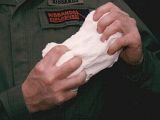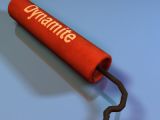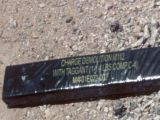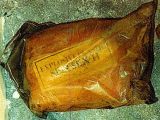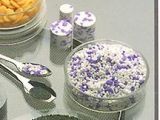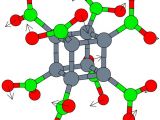An explosion is a sudden increase in volume and release of energy in a violent manner, usually with the generation of high temperatures and the release of gases. Well, that's nice to know, but what are the most effective explosives, besides the nuclear bomb?
TNT
Trinitrotoluene is best known as a useful explosive material that handles really well, being relatively insensible to shock, friction and most mechanical influences. In fact, the explosive power of TNT is still considered the standard measure of strength of bombs and other explosives.
The most commonly used explosive compound, in military and industrial purposes melts at 80C (180F), far below the temperature at which it will spontaneously detonate, allowing it to be poured as well as safely combined with other explosives.
It's very effective in water, too, since it doesn't react with it, making it the weapon of choice for underwater bombings. Less powerful than other commercial and military alternatives, it can be found in many blends and was even used as filling for armor piercing artillery shells.
Dynamite
It is a common misconception that TNT and dynamite are the same, or that dynamite contains TNT. In fact, whereas TNT is a specific chemical compound, dynamite is an absorbent mixture soaked in nitroglycerin that is compressed into a cylindrical shape and wrapped in paper.
Based on the explosive potential of nitroglycerin, dynamite is considered a high explosive, meaning that it detonates instead of deflagrating, meaning that energy from the initial decomposition causes a pressure gradient that detonates the surrounding fuel. This explosive has been used in most military conflicts, mainly for destroying buildings, bridges and other terrestrial infrastructures of the enemy, but also by bank robbers wanting to crack open safes, as depicted in most westerns.
C4
C-4, or composition 4, is one variety of plastic explosives. The basic idea of plastic explosives, also called plastic bonded explosives (PBX), is to combine explosive chemicals with a plastic binder material. The binder has two important jobs: it coats the explosive material, so it's less sensitive to shock and heat, which makes it relatively safe to handle the explosive and it makes the explosive material highly malleable, so that you can mold it into different shapes to change the direction of the explosion.
Less than a pound of C-4 could potentially kill several people and several military issued M112 blocks of C-4, weighing about 1.25 pounds (half a kilogram) each, could potentially demolish a truck.
Because of its stability and sheer destructive power, C-4 has attracted the attention of terrorists and guerilla fighters all over the world, and as long as it is readily accessible, C-4 will continue to be a primary weapon in the terrorist arsenal.
Semtex
An all-purpose plastic explosive, it is used in commercial blasting, demolition and in certain military applications. In has even surpassed C4 in the preferences of terrorists all around the world, due to the fact that it was, until recently, extremely difficult to detect and easily obtained.
To give you an idea of its explosive power, 250 grams (half a pound) of Semtex could destroy a commercial passenger airplane, as sadly proven in the case of Pan Am Flight 103. This compound is also easy to mold and handle and it's usable over a greater temperature range than other types.
Although considered by many the strongest explosive in the world, it is not exceptional in its performance, but it compensates by being stable, easy to store and not extremely expensive.
HMX
Also known as octogen or cyclotetramethylene-tetranitramine, this is a powerful and relatively insensitive nitroamine high explosive, used almost exclusively in military applications. It is currently considered the state-of-the-art military explosive.
The basic molecule is a ring alternating hydrogen and carbon atoms, eight of them in total, having a nitro group attached to each nitrogen atom. This gives the substance a high molecular weight, which results in one of the most powerful chemical explosives manufactured.
HMX is not only used as an explosive by itself, the high energy it puts out being employed as a detonator in nuclear weapons and as a solid rocket propellant.
Octanitrocubane
Now this is one of the most powerful non-nuclear explosives known. It is not "the most powerful" because no one can guarantee the inexistence of other explosive compounds, even more powerful, that are still part of some classified governmental project.
This substance is a truly powerful explosive, insensitive to shock, like TNT and has 20 to 25 percent greater explosion power that HMX.
Octanitrocubane consists of a cube of eight carbons with nitro groups (oxygens and nitrogens) attached to each carbon. One interesting fact is that it doesn't require an external oxygen source to decompose, meaning that it could blow up in every environment, including water and the vacuum of space.
However, researchers haven't yet made enough octanitrocubane to check its explosiveness, but tests on small samples show that the compound could be twice as powerful as trinitrotoluene (TNT).
The advantages of being safe to handle and the fact that its byproducts won't hurt the environment fit the military's requirements, thus making the most probable explosive of choice in the years to come.
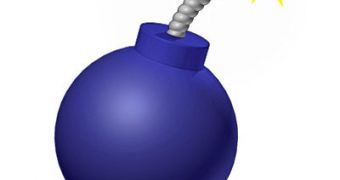
 14 DAY TRIAL //
14 DAY TRIAL // 
